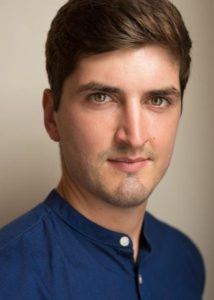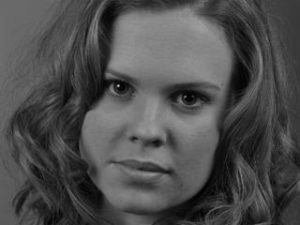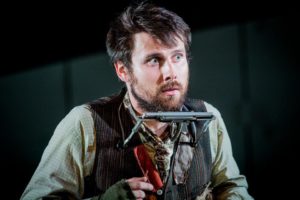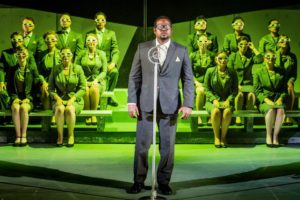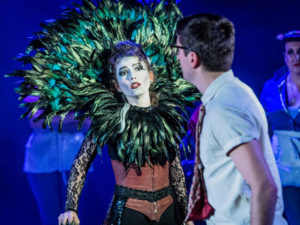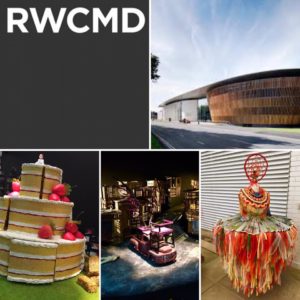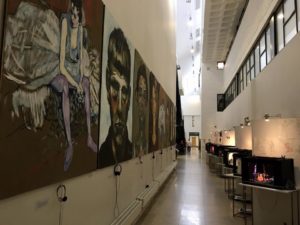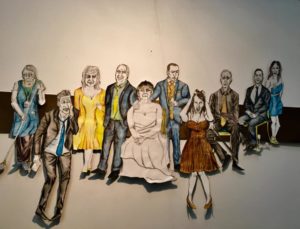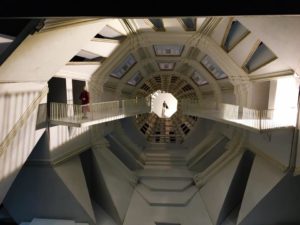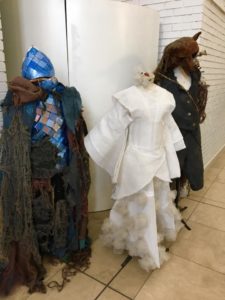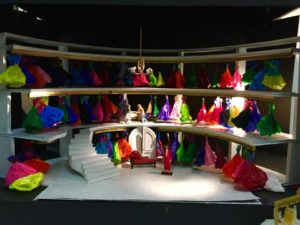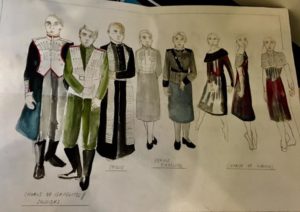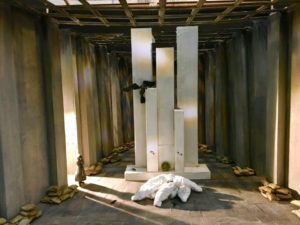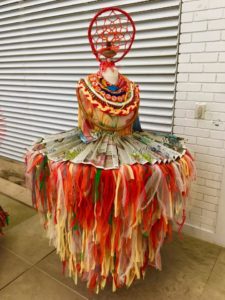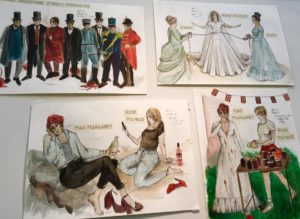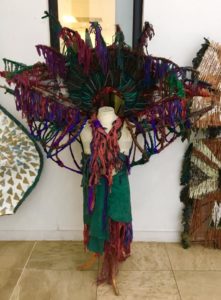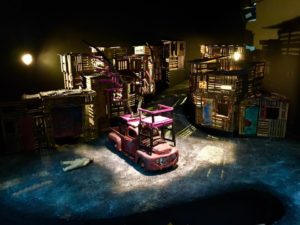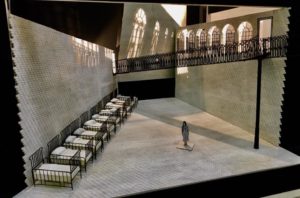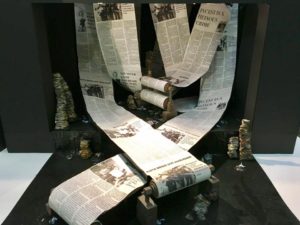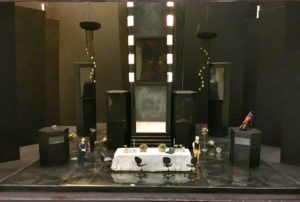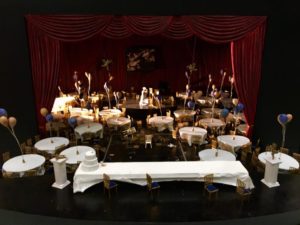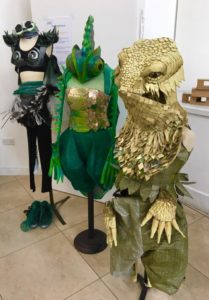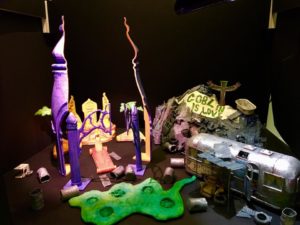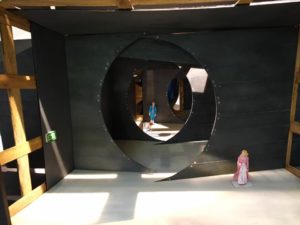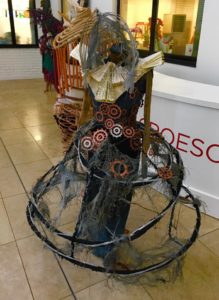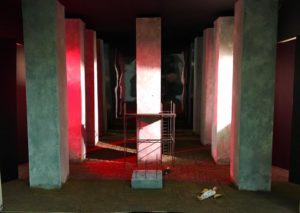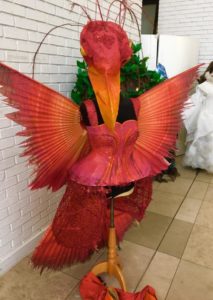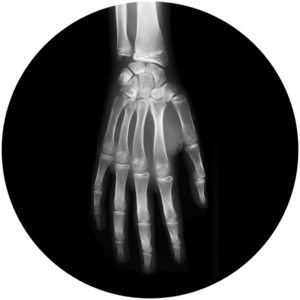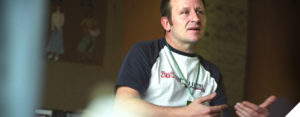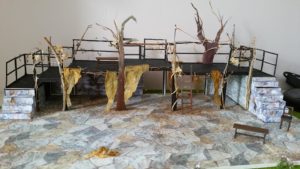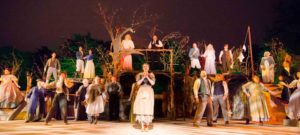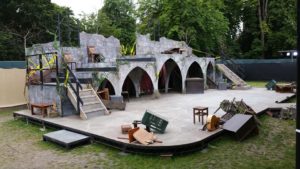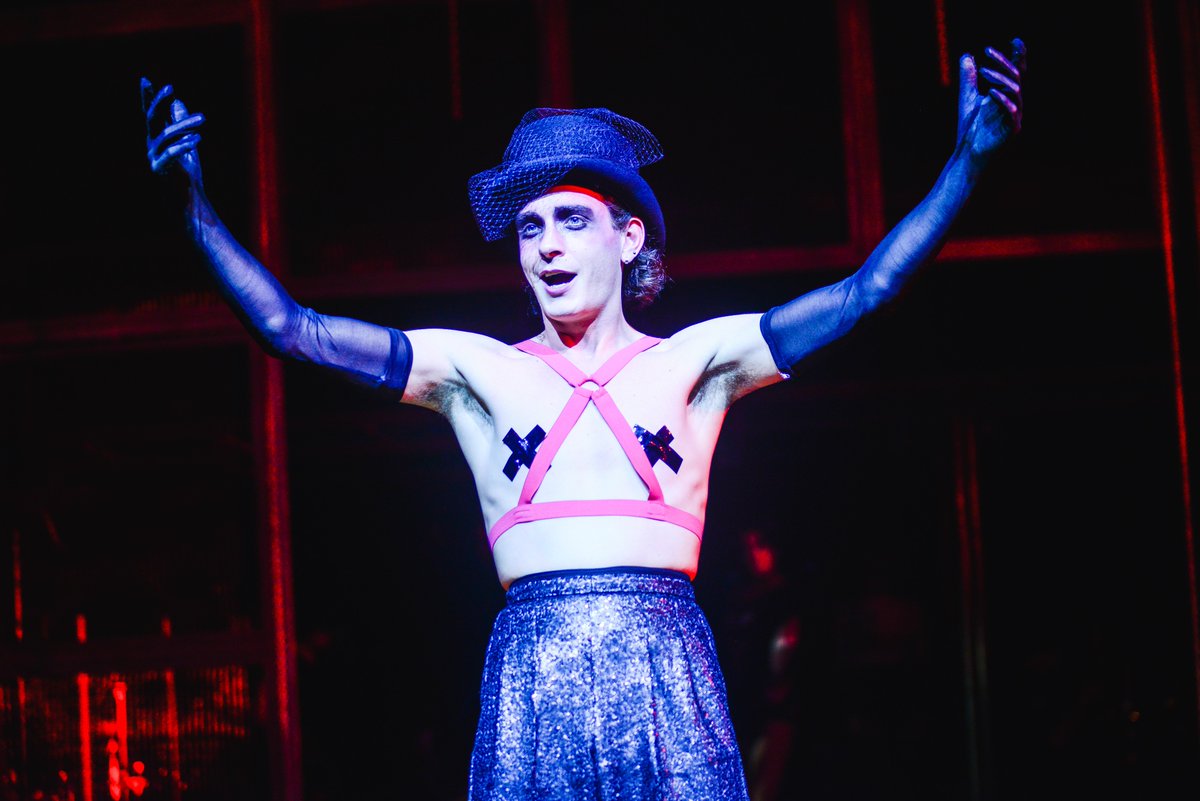
 (4 / 5)
(4 / 5)
Ripples can be viewed online for two weeks, please note this review contains information about this production.
Is it ever possible to overcome addiction?
Ripples, a Sherman Theatre/RWCMD/National Theatre of Wales production is a story of 8 people who say they have succumbed to addiction as they journey through twelve weeks of group therapy. Owing to the shutdown of society at this time, the play was presented in a video conference. Did this detract from the play as a spectacle?
It was a treat to be able to watch theatre having been deprived of it for several weeks. It is great to see people using their imagination to continue with theatre even though we cannot meet in person. Ripples is a very good example, an enterprising adaptation of a script due to be performed on stage by graduates of the RWCMD and directed by Matthew Holmquist, written by Tracy Harris. Of course it lacked the immediacy that live theatre brings. However I have taken part in a fair few ‘Zoom’ conferences recently and understand the glitchy nature of the system and the awkwardness with dialogue that can arise. Thankfully the technology worked and the presentation came across as professional and well edited.
The storyline did not make for leisurely viewing, but then again theatre should reflect a range of human experience and this play confirmed that sometimes there are no easy answers and neat endings in life. It was powerful, personal testimony that explored the extremes of human experience and touched on issues like rape, abuse, bereavement, homophobic violence, suicide, betrayal and forgiveness. Many of the characters demonstrated symptoms of mental health problems. These were cited as reasons why people fell into addiction and while some people find themselves in this situation owing to more mundane circumstance, it is a truism that there is a reason why people become addicted.
The play communicated the awkwardness of starting a group therapy session, wondering what the point is when you perform a seemingly spurious exercise designed to get people talking. It then successfully explored how people found others quite annoying or alternatively warmed to each other. There was plenty of tension between certain characters but also you could find supportive advice and appreciative friendship. This reflects the dysfunctional and disrupted lifestyle that addiction can bring and how an addict can need others but also find it hard to form productive relationships
The awkwardness posed questions of such group sessions. How open should I be? Do I tell the truth? How much truth do I tell? These are tough questions for anybody but amplified by the fact that addiction involves living a lie for many people. The level of conversation was so deep that it brought its own awkwardness as well. People were sharing at a level normally seen only in a patient/counsellor relationship or with the deepest of friends, yet here you do the same with people who are strangers to each other.
This rammed home possibly the most salient point in common with people who suffer an addiction, vulnerability. The play did an excellent job of uncovering how each of the characters was vulnerable, both as a reason for addiction and a consequence from it. It also illustrated that testimony given was a mixture of truth, personal interpretation of events and make-believe. All of the characters were looking for trust and support, but these attributes were hard to find. All characters demonstrated the desperation to escape addiction yet many would not have the will to achieve this.
The play had an ambiguous ending. The lead counsellor did not attend the final session having found the previous too troublesome, when one member after an argument walked out to return to her addictive lifestyle. In that sense, the group failed and this is a key message. Sometimes with the best will in the world, addiction is so powerful that people cannot escape no matter how they try.
However this was only partial failure and certain characters formed relationships that may well endure and stated that they had benefitted considerably from this exercise. Such is the nature of rehab. Looking at the optimistic side of the ending, there were plenty of reasons given for people to be alive, dancing, late night conversations, love, sex, laughter, swimming in the sea, music, and perhaps most importantly, faith – generally and in people. I found this a great thought to be left with.
This was an intense play and watching it onscreen made for a different experience. Of course it lacked immediacy and it was easy to lose concentration as I was at home with a few distractions around. It lacked the breadth of action possible on a stage compared to 8 screens on a television, but the static nature of the performance added to the bleak, personal nature of the stories. I thoroughly enjoyed the production and thought each of the members of the Royal Welsh College of Music and Drama, Catrin Walker-Booth, John Tate, Luke Nunn, Emily John, Shannen McNeice, Mark Henry Davies, Dafydd Thomas and Meryn Davies Williams acquitted themselves with distinction. Given the topic matter, this play is not for everyone, but those who get to see it will find it a memorable, thought provoking piece of theatre. It is available online for the next two weeks on the AM Channel here.
Richard Evans



 (1 / 5)
(1 / 5) (3 / 5)
(3 / 5)
